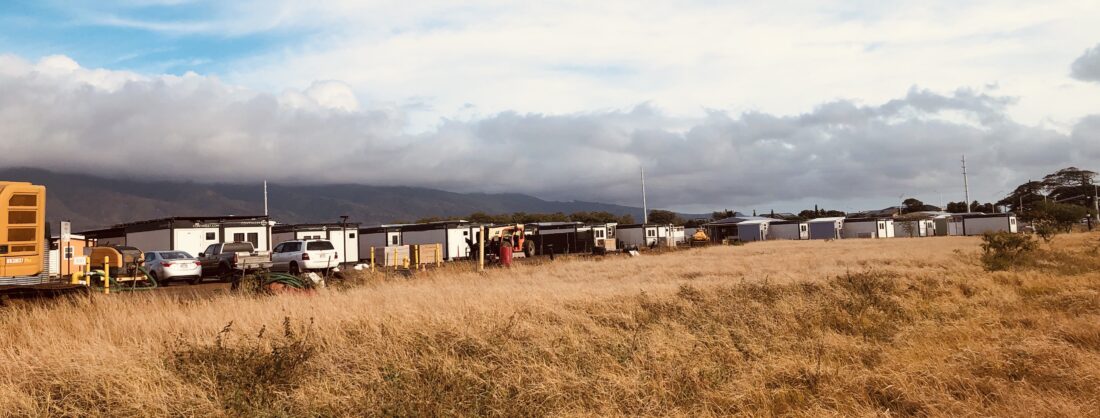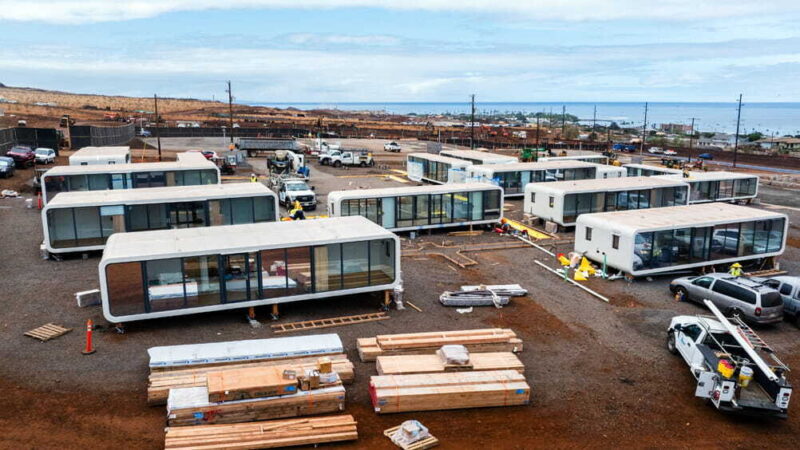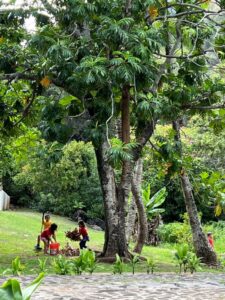Temporary housing projects grow with many Lahaina wildfire survivors still in need

Builders are continuing to increase the inventory of temporary homes for thousands of Lahaina wildfire survivors, including tenants and former homeowners. One of the projects includes the HomeAid Hawaii’s 450-unit project mauka of Wahikuli in West Maui. Photo courtesy HomeAid
A survey by the University of Hawaii in June found 41% of survivors of the August 2023 wildfires on Maui still do not have a permanent home.
Currently, a number of temporary housing projects are continuing to be built for wildfire survivors after more than 2,200 structures were destroyed. However, at least 1,000 individuals have left Maui after the wildfire, according to the University of Hawaii Economic Research Organization, known as UHERO.
In an effort to provide temporary housing, HomeAid Hawaii has built 288 units at Ka La’i Ola out of the 450 units planned on state land mauka of Wahikuli in West Maui.
HomeAid Hawaii chief executive officer Kimo Carvalho said the 288 occupied units include 731 residents in 269 households.
The Ka La’i Ola project broke ground on April 30, 2024, with plans to house up to 1,500 wildfire survivors.
Carvalho, who formerly served as the vice president of Community Impact for Aloha United Way, said Ka La’i Ola includes studios as well as one-, two- and three-bedroom homes and are designed so they can have multigenerational units.
“A lot of what we’re doing is cutting the red tape and doing emergency housing,” Carvalho said.
The lease for the emergency housing land mauka of Wahikuli is for five years, after which the area will be used by the state Department of Hawaiian Homes to develop housing for native Hawaiians, he said.
Carvalho said HomeAid is also building 64 tiny homes by the Kahului Airport near Hana Highway and Elmer F. Cravalho Way.
He said the tiny homes — each about 100 square feet for emergency housing for wildlife survivors singles or couples — are scheduled to be completed within a couple of months.
“The 64 still needs connection to utilities,” Carvalho said.
Also in Central Maui, Lahaina survivors are beginning to occupy temporary quarters in container housing units across from King’s Cathedral, which donated the use of 10 acres of land through 2030. The project was commissioned and coordinated with the nonprofit Family Life Center.
Founded in 2019, Continest Technologies, a manufacturer and developer of foldable containers based in Hungary, has participated in several humanitarian projects with its quick-installation modular containers.
Besides temporary housing, Continest has built a mobile health care center in cooperation with the World Health Organization in Uganda.

The Maui-based nonprofit Family Life Center is working with Continest USA to provide temporary housing across from King’s Cathedral in Kahului. The Maui News/Gary Kubota
Employees of Continest USA and the Family Life Center were on-site to greet the crew of the SAC C-17 military cargo plane carrying the foldable containers.
Family Life Center chief operating officer Ashley Kelly said the project now houses 129 Lahaina survivors from 33 households and is designed to accommodate multigenerational families and more are planned for the future.
Plans are also moving forward for a 47-unit educator workforce housing project near Princess Nāhiʻenaʻena Elementary, Lahaina Intermediate and Lahainaluna High schools.
In a survey, nearly one-third of Hawaii state Department of Education employees on Maui said they’ve faced housing displacement since the wildfires.
More than 20% of Lahaina educators surveyed said they are thinking about leaving the state due to housing affordability, while newer hires said housing is the No. 1 reason they will remain in or leave the state.
The project, developed by Dowling Company, includes one- and two-bedroom configurations, with units expected to be completed by next January. Rental rates, which are still being finalized, will be based on income.





